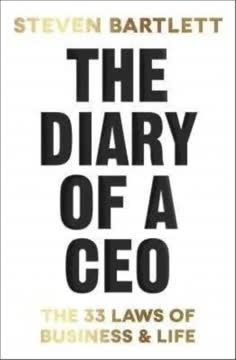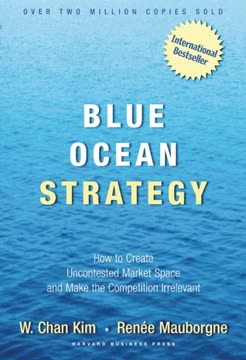Key Takeaways
1. Discontinuous Change: The New Normal
We are entering an Age of Unreason, when the future, in so many areas, is there to be shaped, by us and for us; a time when the only prediction that will hold true is that no predictions will hold true; a time, therefore, for bold imaginings in private life as well as public, for thinking the unlikely and doing the unreasonable.
Embracing uncertainty. The world is experiencing rapid, unpredictable changes that require new ways of thinking and adapting. Traditional models of work, education, and societal structures are becoming obsolete.
Opportunity in disruption. While discontinuous change can be unsettling, it also presents opportunities for innovation and personal growth. Those who can adapt and think creatively will be best positioned to thrive in this new environment.
- Key areas of discontinuous change:
- Technology and automation
- Globalization
- Shifting workforce demographics
- Environmental challenges
2. The Shamrock Organization: Core, Contractors, and Contingent Workers
The shamrock organization is made up of three very different groups of people, groups with different expectations, managed differently, paid differently, organized differently.
Flexible workforce structure. The shamrock model divides an organization into three distinct groups: a core of essential full-time employees, a group of specialized contractors, and a flexible contingent workforce.
Adapting to changing needs. This structure allows organizations to be more agile and cost-effective, scaling their workforce up or down as needed. It also provides opportunities for individuals to work in ways that suit their lifestyles and preferences.
- Characteristics of each group:
- Core: Essential, highly skilled, well-compensated
- Contractors: Specialized expertise, project-based work
- Contingent: Flexible, part-time, or temporary workers
3. The Federal Organization: Autonomy with Cooperation
Federalism seeks to make it big by keeping it small, or at least independent, by combining autonomy with cooperation.
Balancing independence and collaboration. Federal organizations combine the benefits of small, autonomous units with the resources and reach of larger entities. This structure promotes innovation and adaptability while maintaining overall coherence.
Empowering decision-making. By pushing authority and responsibility down to lower levels, federal organizations can respond more quickly to local needs and opportunities. This approach also fosters a sense of ownership and engagement among employees.
- Key principles of federal organizations:
- Subsidiarity: Decisions made at the lowest appropriate level
- Shared identity and values
- Clear boundaries between central and local responsibilities
4. The Triple I Organization: Intelligence, Information, and Ideas
The new formula for success, and for effectiveness, is I3 = AV, where I stands for Intelligence, Information and Ideas, and AV means added value in cash or in kind.
Knowledge-driven value creation. In the information age, organizations must leverage intelligence, information, and ideas to create value. This requires a shift from traditional hierarchies to more collaborative, learning-focused structures.
Cultivating a learning culture. Triple I organizations prioritize continuous learning and development, encouraging employees to share knowledge and experiment with new ideas. This approach helps organizations stay adaptive and innovative in rapidly changing environments.
- Characteristics of Triple I organizations:
- Emphasis on intellectual capital
- Continuous learning and development
- Open communication and knowledge sharing
- Tolerance for experimentation and failure
5. Portfolio Careers: Balancing Multiple Work Roles
A work portfolio is a way of describing how the different bits of work in our life fit together to form a balanced whole.
Diverse work experiences. Portfolio careers involve balancing multiple work roles, often combining traditional employment with freelance work, entrepreneurship, and personal projects. This approach allows individuals to diversify their skills and income streams.
Personalized career paths. By creating a portfolio career, individuals can tailor their work lives to their interests, skills, and values. This flexibility can lead to greater job satisfaction and work-life balance.
- Components of a portfolio career:
- Wage work: Traditional employment
- Fee work: Freelance or contract work
- Homework: Domestic responsibilities
- Gift work: Volunteer or community service
- Study work: Ongoing learning and skill development
6. Re-inventing Education for Lifelong Learning
Education needs to be re-invented. Our schools first need to be re-designed for they are not immune to the principles of the shamrock or of federalism.
Adapting to new realities. Traditional education systems are ill-equipped to prepare individuals for the rapidly changing world of work. A new approach is needed that emphasizes lifelong learning, adaptability, and diverse forms of intelligence.
Personalized learning paths. Education should be tailored to individual needs and interests, with a focus on developing critical thinking, creativity, and problem-solving skills. This may involve a mix of traditional schooling, online learning, and practical experience.
- Key elements of re-invented education:
- Emphasis on multiple forms of intelligence
- Integration of technology and hands-on learning
- Flexible, modular learning structures
- Collaboration between educational institutions and employers
7. The Upside-Down Society: Adapting to New Realities
Upside-down thinking regards this as nonsense. We need more talents than the intellect, important though that is. Talent, we know, has many faces.
Challenging assumptions. To thrive in the Age of Unreason, we must be willing to question long-held beliefs and practices. This includes rethinking societal structures, government policies, and individual life choices.
Embracing diversity and flexibility. An upside-down society recognizes and values multiple forms of intelligence and contribution. It creates systems that support diverse work arrangements, lifelong learning, and individual empowerment.
- Potential changes in an upside-down society:
- Universal basic income
- Shift from income tax to expenditure tax
- Flexible retirement and work arrangements
- Integration of part-time professionals in various fields
Last updated:
FAQ
What's "The Age of Unreason" about?
- Changing world of work: The book explores how the world of work is undergoing significant changes, moving away from traditional structures and expectations.
- Discontinuous change: It emphasizes the concept of discontinuous change, where past patterns no longer predict future outcomes, requiring new ways of thinking.
- Personal and organizational adaptation: Handy discusses how both individuals and organizations must adapt to these changes to thrive in the future.
- New organizational models: The book introduces new organizational models like the shamrock and federal organizations to illustrate how businesses can adapt to modern challenges.
Why should I read "The Age of Unreason"?
- Insightful analysis: The book provides a deep analysis of the evolving nature of work and its implications for individuals and organizations.
- Practical guidance: Handy offers practical advice on how to navigate and succeed in a rapidly changing world.
- Innovative concepts: It introduces innovative concepts like the shamrock organization and portfolio work, which are relevant to modern work environments.
- Future-oriented thinking: Reading this book can help you prepare for future changes in the workplace and society, making it a valuable resource for personal and professional growth.
What are the key takeaways of "The Age of Unreason"?
- Embrace change: The book emphasizes the importance of embracing change and being open to new ways of thinking and working.
- Adaptability is crucial: Both individuals and organizations need to be adaptable to survive and thrive in a world of discontinuous change.
- New organizational structures: Handy introduces new organizational models like the shamrock and federal organizations to better align with modern work dynamics.
- Portfolio careers: The concept of portfolio careers is highlighted as a way for individuals to diversify their skills and income sources in a changing job market.
What is the "shamrock organization" concept in "The Age of Unreason"?
- Three-leaf structure: The shamrock organization consists of three parts: a core of essential workers, a contractual fringe of outsourced work, and a flexible labor force.
- Core workers: These are the essential employees who are highly skilled and committed to the organization, often receiving high compensation.
- Contractual fringe: This includes outsourced work to specialists or contractors who are not permanent employees but provide specific services.
- Flexible labor force: Part-time or temporary workers who provide additional support as needed, allowing the organization to remain agile and cost-effective.
How does "The Age of Unreason" define "discontinuous change"?
- Break from the past: Discontinuous change refers to shifts that break away from past patterns and require new approaches and thinking.
- Unpredictable outcomes: Unlike continuous change, which follows a predictable path, discontinuous change leads to unexpected and often radical outcomes.
- Necessitates innovation: It demands innovation and creativity from individuals and organizations to adapt and succeed.
- Examples in the book: Handy provides examples such as technological advancements and shifts in organizational structures to illustrate discontinuous change.
What is the "federal organization" model in "The Age of Unreason"?
- Decentralized structure: The federal organization model emphasizes decentralization, where individual units operate with autonomy but under a common framework.
- Reverse delegation: Unlike traditional models, power and decision-making are often delegated from the bottom up, rather than top-down.
- Coordination over control: The central authority focuses on coordination and support rather than direct control, allowing for flexibility and responsiveness.
- Benefits: This model allows organizations to be more adaptable and innovative, responding quickly to changes in the market or environment.
What is "portfolio work" according to "The Age of Unreason"?
- Diverse work components: Portfolio work involves having a variety of work components, such as wage work, fee work, homework, gift work, and study work.
- Flexibility and control: It offers individuals more flexibility and control over their work-life balance, allowing them to pursue multiple interests and income sources.
- Risk management: By diversifying work activities, individuals can manage risks better and adapt to changes in the job market.
- Future of work: Handy suggests that portfolio work will become increasingly common as traditional full-time jobs become less prevalent.
How does "The Age of Unreason" suggest individuals should adapt to change?
- Continuous learning: Emphasizes the importance of lifelong learning and staying open to new ideas and skills.
- Embrace uncertainty: Encourages individuals to embrace uncertainty and view it as an opportunity for growth and innovation.
- Develop a portfolio career: Suggests building a portfolio career to diversify skills and income sources, providing greater security and flexibility.
- Cultivate adaptability: Stresses the need to be adaptable and resilient in the face of rapid and unpredictable changes.
What are the implications of "The Age of Unreason" for organizations?
- Need for new structures: Organizations must adopt new structures like the shamrock and federal models to remain competitive and efficient.
- Focus on quality: Emphasizes the importance of focusing on quality and innovation to meet the demands of a changing market.
- Empower employees: Encourages organizations to empower employees, fostering a culture of learning and adaptability.
- Decentralized decision-making: Suggests moving towards decentralized decision-making to enhance responsiveness and flexibility.
What are the best quotes from "The Age of Unreason" and what do they mean?
- "The future is not inevitable. We can influence it, if we know what we want it to be." This quote highlights the power of proactive change and the importance of having a clear vision for the future.
- "All progress depends on the unreasonable man." This emphasizes the need for unconventional thinking and challenging the status quo to drive progress.
- "Change is not what it used to be." Reflects the idea that change today is more rapid and unpredictable, requiring new approaches and mindsets.
- "We need not stumble backwards into the future, casting longing glances at what used to be." Encourages embracing change and looking forward with optimism and innovation.
How does "The Age of Unreason" address the role of technology in the workplace?
- Driver of change: Technology is seen as a major driver of change, reshaping how work is done and the skills required.
- Smart machines: The book discusses the rise of smart machines and their impact on productivity and the nature of work.
- Telecommuting and flexibility: Technology enables telecommuting and more flexible work arrangements, allowing for greater work-life balance.
- Need for adaptation: Organizations and individuals must adapt to technological advancements to remain relevant and competitive.
What societal changes does "The Age of Unreason" predict?
- Shift in work patterns: Predicts a shift from traditional full-time jobs to more flexible and diverse work arrangements.
- Impact on education: Suggests a need to reinvent education to prepare individuals for a rapidly changing job market.
- Redefinition of success: Proposes a redefinition of success, focusing on personal fulfillment and diverse achievements rather than traditional career paths.
- Role of government: Discusses the potential need for government policies to adapt to new work realities, such as implementing a national income scheme.
Review Summary
The Age of Unreason is praised for its prescient insights into organizational change, technology's impact on work, and the need for adaptive thinking. Readers appreciate Handy's vision of flexible work arrangements, portfolio careers, and the shift to knowledge-based economies. Many note the book's continued relevance decades after publication. Some find the ideas thought-provoking but occasionally impractical or difficult to follow. Overall, reviewers commend Handy's ability to anticipate future trends and challenge traditional business paradigms, making it a valuable read for managers and business leaders.
Similar Books









Download PDF
Download EPUB
.epub digital book format is ideal for reading ebooks on phones, tablets, and e-readers.












